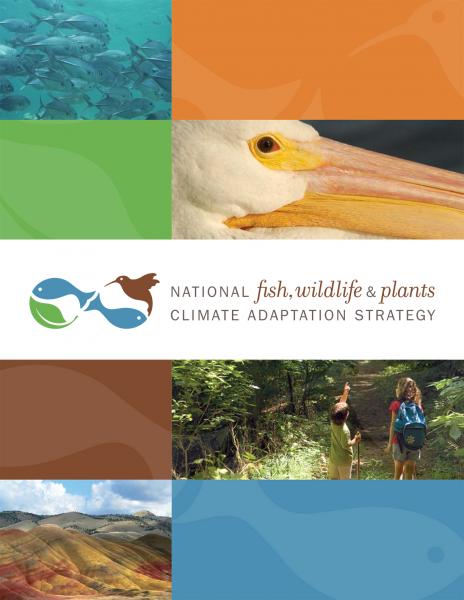National Fish, Wildlife, and Plants Climate Adaptation Strategy
The original National Fish, Wildlife, and Plants Climate Adaptation Strategy (PDF) was published in 2012. Though the website that accompanied the guide is no longer accessible, an update titled Advancing the National Fish, Wildlife, and Plants Climate Adaptation Strategy into a New Decade (PDF) was published in January 2021. A two-page overview of the update (PDF) is also available.
As outlined in the original strategy, people can take steps to help the country’s valuable natural resources—and the communities and economies that depend on them—be resilient as climate changes. The National Fish, Wildlife, and Plants Climate Adaptation Strategy describes a set of goals and actions developed by teams of federal, state, and tribal managers and researchers, with input from many other organizations and the public.
The Strategy is organized around seven major goals that will help fish, wildlife, plants, and ecosystems adapt to changing conditions, and provides a list of practical actions that can be taken—or at least initiated—in the next five to ten years. These goals include:

The cover of the 2012 National Fish, Wildlife, and Plants Climate Adaptation Strategy report. Download the 2012 report.
- Goal 1. Conserve habitat to support healthy fish, wildlife, and plant populations and ecosystem functions in a changing climate.
- Goal 2. Manage species and habitats to protect ecosystem functions and provide sustainable cultural, subsistence, recreational, and commercial use in a changing climate.
- Goal 3. Enhance capacity for effective management in a changing climate.
- Goal 4. Support adaptive management in a changing climate through integrated observation and monitoring and use of decision support tools.
- Goal 5. Increase knowledge and information on impacts and responses of fish, wildlife, and plants to a changing climate.
- Goal 6. Increase awareness and motivate action to safeguard fish, wildlife, and plants in a changing climate.
- Goal 7. Reduce non-climate stressors to help fish, wildlife, plants, and ecosystems adapt to a changing climate.
The Strategy represents a significant effort to take effective action to reduce risks and increase the resiliency of natural resources by providing a common framework for collective action. It also allows us to understand individual climate adaptation actions in the broader context of adaptation across our living natural resources.
Image credit: Rainbow Trout in Hand at Gechiak Creek, U.S. Fish and Wildlife Service. CC-BY-2.0, https://creativecommons.org/licenses/by/2.0/, via Flickr.

